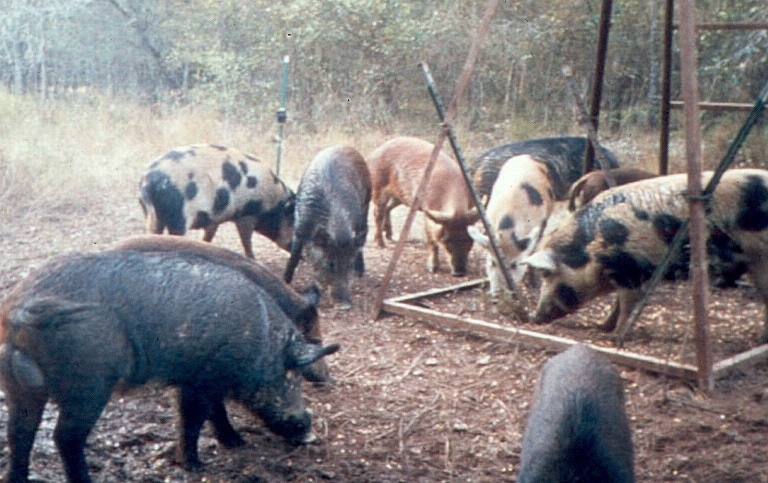July 14, 2015

Putting a dollar figure on feral hog damage has put the issue in perspective in Louisiana. A study released July 13 by the Louisiana State University AgCenter estimates that feral hogs did at least $30 million in damage to crops in 2013.
AgCenter economist Shaun Tanger has been gathering data for more than a year from Louisiana farmers about hog activity and damage, which ranges from rooting up and eating crops to damaging farm equipment. The hogs can also spread fatal diseases to wildlife and livestock.
“Up to this point, we’ve only had anecdotes, so we wanted to quantify how much cost is associated with feral hog activity,” says Tanger, who worked on the survey project with AgCenter forest products specialist Rich Vlosky and wildlife and fisheries specialist Michael Kaller.
Hog-damaged crops often sell at a reduced price, and sometimes farmers cannot sell them at all. The 2013 Louisiana soybean crop suffered more than $9 million worth of hog damage. Hay producers lost about $7 million, while the rice and corn industries both saw about $5 million in damage. Farmers also reported hogs interfering with livestock operations and damaging equipment and levees.
According to the USDA, there are about 6 million feral hogs living in at least 41 states. California, Florida, Oklahoma and Texas have some of the largest populations. Louisiana’s feral hog population has been estimated at 500,000, with hotspots in the south central and northeastern parts of the state. About 31% of farmers in the AgCenter study said they have hogs on their land.
Up to 75% of feral hogs would have to be eliminated just to maintain the current population, Tanger says. They are an extremely prolific breed, with some sows able to have two litters of six piglets every year. If feral hog populations continue to grow so rapidly, they are likely to move into suburban areas. That could lead to dangerous human-hog encounters.
“Once this becomes a nonfarm problem, it will become a much more urgent policy problem,” Tanger says.
The most effective way to control feral hogs is trapping and killing them. AgCenter scientists have been studying alternatives, including sodium nitrite-based bait.
You May Also Like



